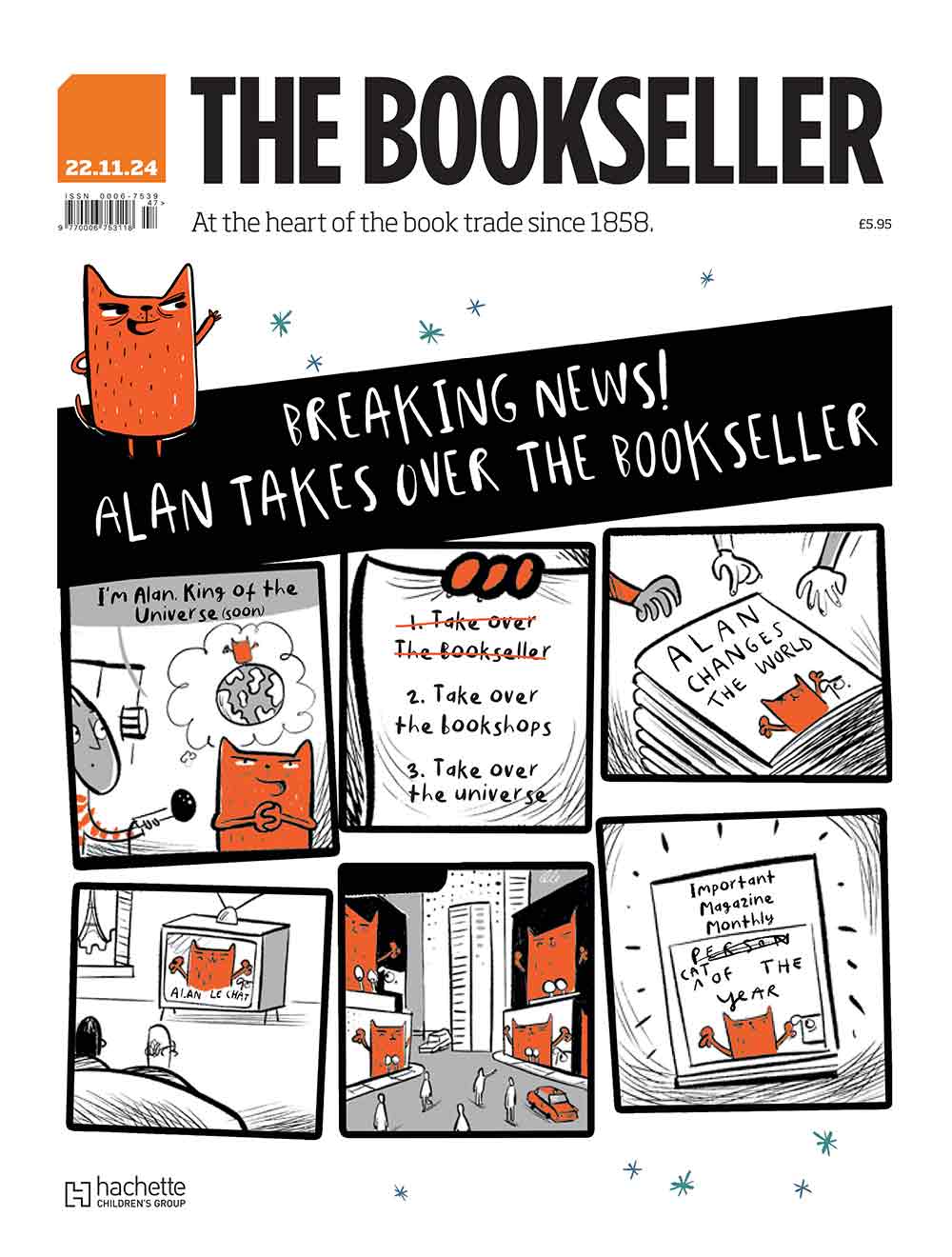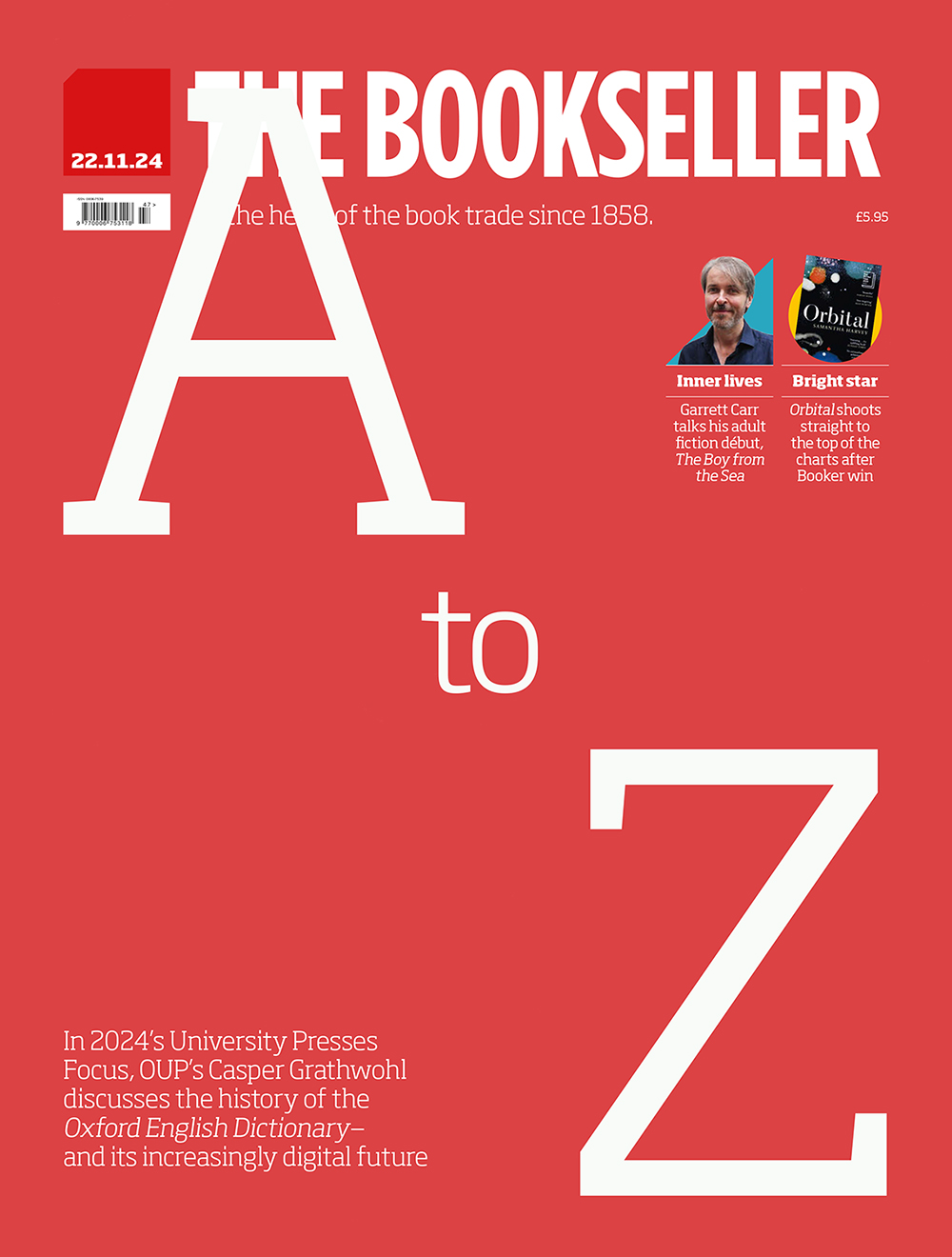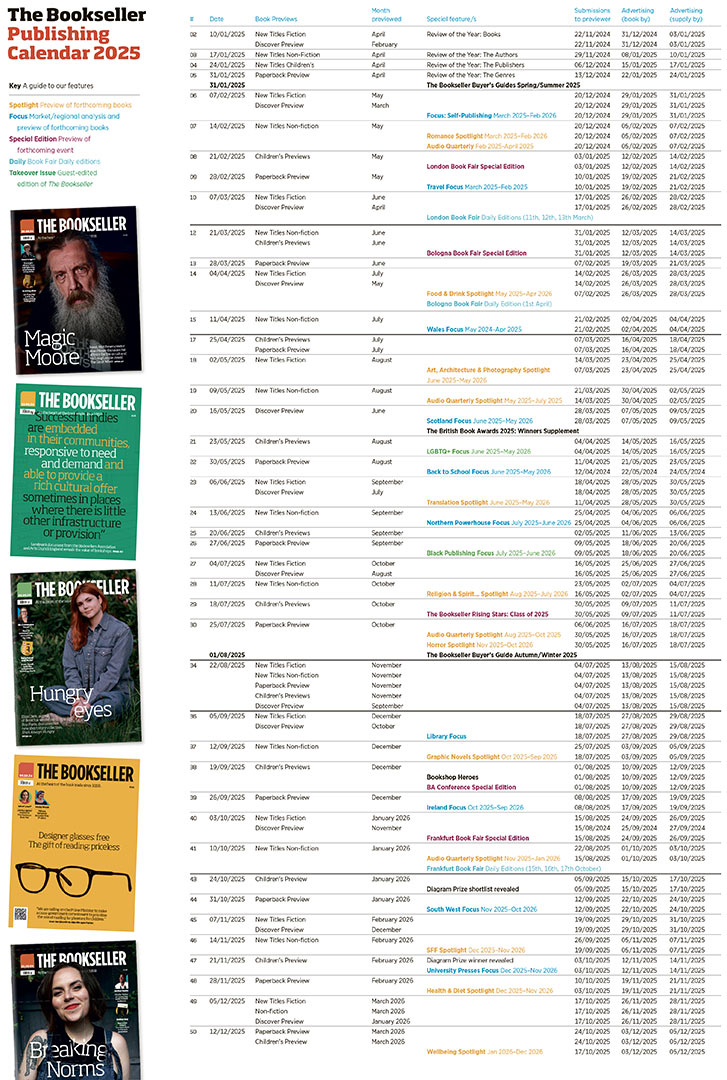You are viewing your 1 free article this month. Login to read more articles.
Posy Simmonds: The art of counting skirts
The illustrator and cartoonist Posy Simmonds has been making good use of her long experience of the book trade--and chatter with her fellow authors--for her Literary Life cartoons, serialised weekly in the Guardian "Review" and now to be published in a collection (Literary Life, Jonathan Cape, 6th November, £14.99, 0224072692).
Simmonds' vivid satirical sketches capture the pains of the writer's career--along with its besetting sins of vanity and self-regard--as authors are seen enduring the rigours of the publicity circuit, fretting about their status, agonising about war in Iraq, and attempting to seduce young women at launch parties, to the amusement of their friends. Meanwhile Penny Wintergreene, a buxom independent bookseller, heroically steers her shop along against competition from the "Bounders" bookselling chain just down the road.
Simmonds, who began her first daily cartoon feature nearly 35 years ago--for the Sun, in 1969--before moving to the Guardian, says the strips arise naturally out of the horror stories authors share when they get together. There are the signings where nobody turns up; the punters who insist on bringing their novel for you to read; or the bugbear of children's book illustrators (of which Simmonds is one), being endlessly told "what fun" their work is, and wouldn't they like to move on to something more serious?
But no matter how sharply she skewers her subjects in her work, in person Simmonds' humour is discreet. "Yes, authors are very vain and insecure," she acknowledges smilingly. "It's partly because writing is such a lonely business, and they are stuck away alone in their room with their wordprocessors or their HB pencils, sometimes going mad. I don't know whether the readers realise how awful their life is--it sounds very cushy, sitting working at home."
Simmonds herself works in a cool basement room in an elegant North London square. Her table is loaded with artist's sketch pads, on the pages of which little character drawings, notes of conversations and embryonic plotlines jostle for space. She scribbles down images and ideas as they occur to her and keeps them for later use, producing one cartoon each week for the Guardian--(her deadline is Wednesday night, which in practice means getting up "very early" on Thursday morning to finish them).
Simmonds has the ability to create characters instantly recognisable as literary "types". She sketches out the faces until she gets it right, she explains. For example, with Owen Lloyd, a majestic-looking author with an imposing mane of swept-back hair, she says, "When I first drew him, he looked totally different. I was drawing him in pencil, and I kept doing his nose and rubbing it out. Then I got his slightly downturned mouth and gave him quite a big chin, and I thought, 'I kind of know you.'"
She has a back story in mind for her characters: Penny Wintergreene, "at one time drank and smoked like anything, and I think she's rather fruity in her language, and calls everyone 'sweetie' and 'darling'; I think she's very knowledgeable and inherited the shop from her father."
Key to her technique is an extreme degree of precise observation, both of language and particularly of clothes. "I'm really interested in what people wear. I sit thinking it over, 'What do publicity girls wear?' They usually wear black and have tremendous boots and really enviable handbags."
She mulls over where exactly a character is likely to shop: "Just in Oxford, or Cambridge, or Manchester? Are you limited to Marks&Spencer, or do you go to Harvey Nicks?" Sometimes, she says, she might take a bus down Oxford Street and just count the number of women wearing skirts: "It's gone down a lot."
It is this precision with incidental detail that gives her cartoons so much of their conviction. At the Hay festival this year, Simmonds produced several rapid pencil sketches, which will form the basis of a future series; amid portraits of eminent authors reading their work, and of festival organiser Peter Florence "looking rather priestly, I think", there are just two completed, finely detailed, colour drawings--they are of the car park and the ladies' loos.
Simmonds sees her work as inevitably a kind of social record. She draws down from her bookshelf a collection of the work of 18th century caricaturist James Gillray: "Look at the wigs, the cut of that coat--it's a wonderful social record and that's part of what cartoons do." Already the work she did in the 1970s contains an element of that, recalling gadgets, dresses and flicked hairstyles long out of fashion.
But her scope of course is broader, as both her books for children (most recently, Lavender) and her graphic novel for adults, the Flaubert-inspired comedy Gemma Bovery (1999), have proved. After a long spell of taking on only shorter projects, she is now gearing herself up with a little apprehension for the major task of another adult novel: "Gemma Bovery took so long to do. People kept saying, 'What are you doing?' After a bit, they stopped asking, or they went, 'Are you still doing that?'"
Benedicte Page









